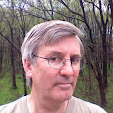 sixteenth-century forbears such as Lucas Cranach and Hans Burgkmair; (in Wolfegg) that a collection of prints of flowers bound up in a volume several centuries ago is the best bouquet imaginable; (in Nürnberg) that sometimes ornament prints escape from the pages of applied decoration to float freely in the atmosphere like some outrageous but rigorously symmetrical begonia that has uprooted itself to masquerade as a hallucination (a not so symmetrical but related example shown here); and (in Coburg and in Nürnberg) that in eighteenth and early nineteenth-century Germany landscape prints and drawings have the ability to transport you, though I think you are not transported to a time or a place but to one of those memories we have all had, a memory of a day in nature that seemed perfect.
sixteenth-century forbears such as Lucas Cranach and Hans Burgkmair; (in Wolfegg) that a collection of prints of flowers bound up in a volume several centuries ago is the best bouquet imaginable; (in Nürnberg) that sometimes ornament prints escape from the pages of applied decoration to float freely in the atmosphere like some outrageous but rigorously symmetrical begonia that has uprooted itself to masquerade as a hallucination (a not so symmetrical but related example shown here); and (in Coburg and in Nürnberg) that in eighteenth and early nineteenth-century Germany landscape prints and drawings have the ability to transport you, though I think you are not transported to a time or a place but to one of those memories we have all had, a memory of a day in nature that seemed perfect.While at the Veste Coburg I managed to catch the last few days of a very fine exhibition about aquatint up to and including Goya. The exhibition and its catalogue were a wonderful collaboration between a print curator and a paper conservator who did not balk at attempts to recreate the processes of Sanby, Le Prince and Ploos van Amstel. Here are the details:
Christiane Wiebel (with contributions by Wolfgang Schwahn). Aquatinta oder "Die Kunst mit dem Pinsel in Kupfer zu stechen" Das druckgraphische Verfahren von seinen Anfängen bis Goya. ISBN: 978-3-422-06693-9

I’m also attaching a photograph of two chopped bicycles boasting “PimpGarage™” labels that can be seen parked on the streets in Nürnberg.





No comments:
Post a Comment